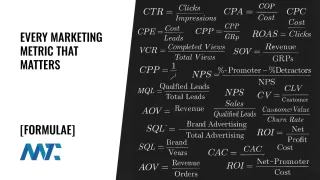The convergence of television and the internet represents one of the most significant shifts in media consumption behavior and content distribution strategies in recent years.
The television industry is undergoing a radical evolution, with a surge in new technologies and services that cater to the modern viewer’s demand for flexibility, choice, and convenience. These innovations have introduced a suite of acronyms that signify the new era of content consumption:
- Over-The-Top (OTT): Direct online streaming services to consumers, challenging traditional broadcast models.
- Connected TV (CTV): Internet-enabled televisions that allow content streaming through apps built into the TV or connected devices.
- Advertising-Based Video on Demand (AVOD): Free content supported by advertising, offering an alternative to subscription models.
- Subscription Video on Demand (SVOD): A model where viewers pay a regular fee for unlimited access to a content library.
- Transactional Video on Demand (TVOD): Pay-per-content services, where viewers pay for each movie or show they watch.
- Multichannel Video Programming Distributor (MVPD): Traditional cable or satellite services that offer a variety of channels in their package.
- Virtual Multichannel Video Programming Distributor (VMVPD): Online services providing live TV channel packages over the internet without requiring a cable or satellite connection.
- Internet Protocol Television (IPTV): Television content delivered over the internet using a network protocol designed for high-speed data transfer.
It is a multifaceted phenomenon driven by technological advancements, changing consumer preferences, and the strategic maneuvers of network owners and content providers.
Network Ownership and Convergence
Network ownership convergence is about integrating the control of content and distribution channels. Major media corporations are consolidating to form larger entities with control over both television networks and internet-based platforms. For example, Disney’s acquisition of 21st Century Fox has allowed the latter to distribute content via traditional channels and streaming services like Disney+. This trend redefines television from a strictly broadcast medium to a multi-platform service.
On-Demand Content and Subscriptions
The rise of on-demand content services like Netflix, Amazon Prime Video, and Hulu has disrupted traditional TV program scheduling and distribution models. These platforms offer subscription-based models that allow viewers to access a wide range of content at their convenience, bypassing traditional cable subscriptions.
Interactivity Between Devices
The interactivity between TV screens and mobile devices has increased with the adoption of second-screen applications and smart TVs. Viewers can now use their mobile devices to interact with content in real time, which opens new doors for advertisers to engage with consumers more dynamically and measure responses instantaneously.
Impact on Advertising
The convergence has significantly impacted advertising strategies. Advertisers can no longer rely on broad demographic targeting through traditional TV slots. Still, they must instead navigate a fragmented landscape with precision targeting, leveraging data analytics and programmatic advertising to reach specific audiences across various platforms.
Emerging Technologies
Emerging technologies like 5G, Artificial Intelligence (AI), and the Internet of Things (IoT) further shape this convergence. With faster data transfer rates, AI-powered personalization, and an ever-expanding network of connected devices, the potential touchpoints for advertisers are growing exponentially.
Strategic Takeaways for Marketers
- Embrace Cross-Platform Campaigns: Marketers must design campaigns that traverse multiple platforms, providing a seamless brand experience from TV to mobile devices.
- Invest in Data Analytics: Understanding viewer behavior across platforms is critical. Data analytics can help in crafting targeted advertising strategies.
- Leverage Programmatic Advertising: Automated buying and selling of advertising space, using AI to optimize ad placements in real-time, are essential for efficiency.
- Focus on Content Quality: With viewers having more choices than ever, high-quality, engaging content is key to capturing and retaining audience attention.
- Interact and Engage: Utilize interactivity features of smart devices to create engaging, responsive advertising that encourages viewer participation.
- Prepare for New Technologies: Keep abreast of technological advancements like AR/VR to incorporate them into future advertising strategies.
- Monitor Privacy Regulations: With growing concerns about data privacy, it’s crucial to stay informed about regulations that could impact advertising approaches.
The evolution of the television and internet convergence presents challenges and opportunities for advertisers. As the landscape continues to evolve, so must the strategies marketers employ to reach and engage with their audience effectively.
